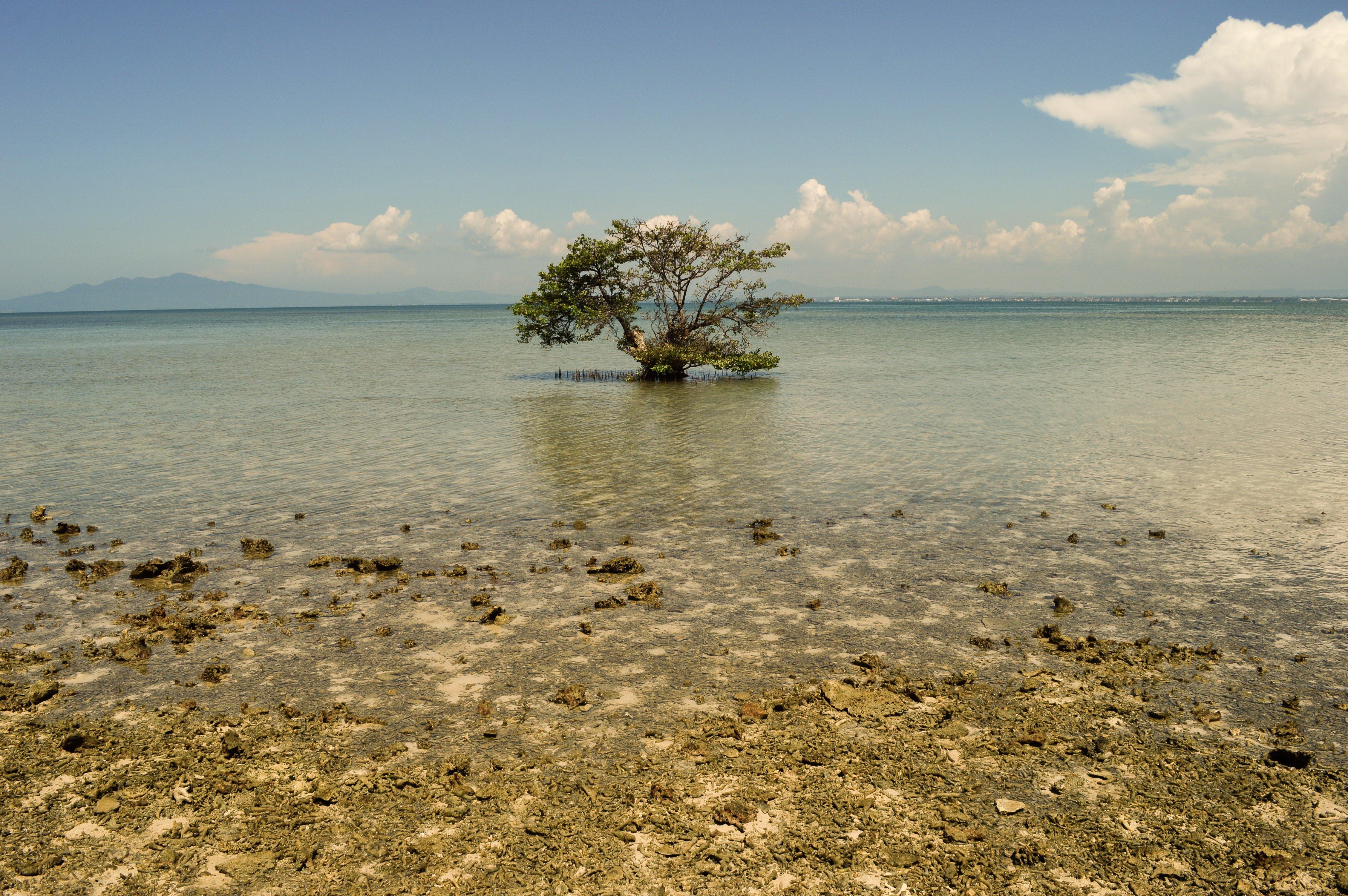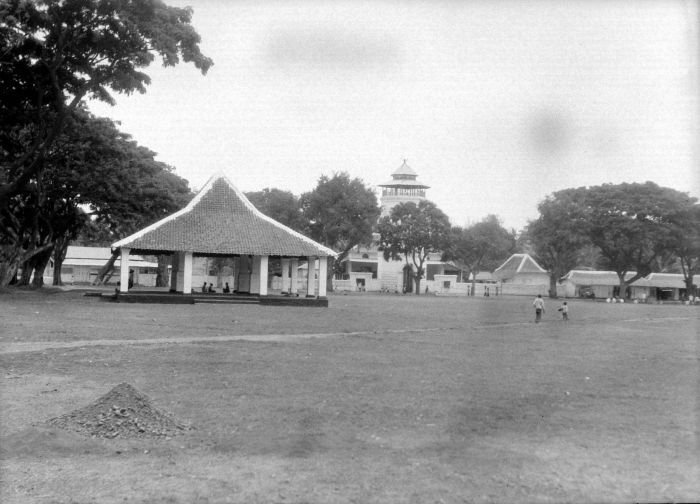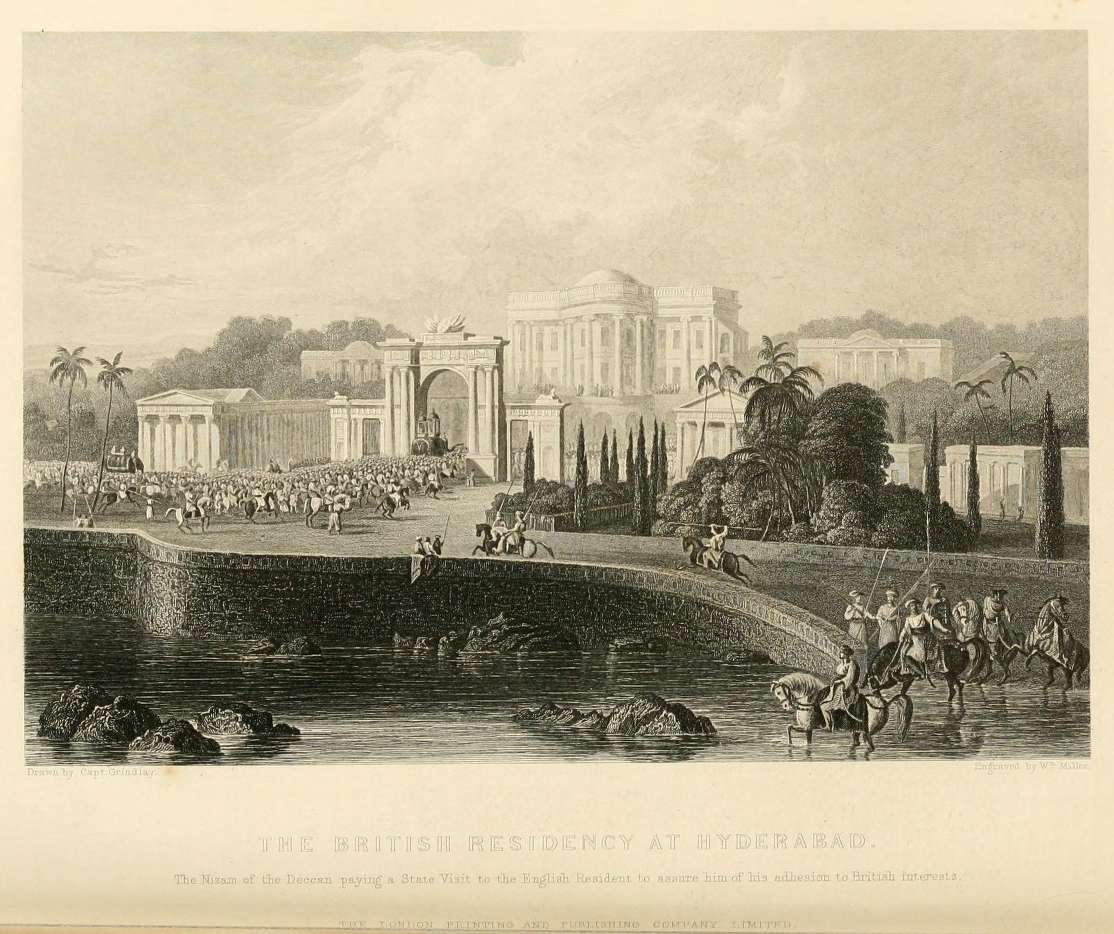|
Soero Pernollo
Kyai Ronggo Ngabehi Soero Pernollo (1720 – 1776), or Surapernala, born Han Tjien Kong, was a Chinese-Javanese nobleman, government official and ally of the Dutch East India Company. He founded the senior Muslim branch of the Han family of Lasem, a branch that became part of the Javanese ''priyayi'', or aristocracy, and distinguished itself in the history of East Java. Han Tjien Kong was born in 1720 at Lasem, a port city in Central Java, to Han Siong Kong (1672 – 1743), a Chinese migrant of ancient lineage, and an unnamed mother of at least part-native ancestry. He had four brothers, including the younger Han Bwee Kong, Kapitein der Chinezen (1727 – 1778). Han Tjien Kong converted to Islam at an unknown date, and subsequently assumed the Javanese name of Soero Pernollo. Sometime in the mid-eighteenth century, Soero Pernollo moved to East Java, at the time still a frontier territory contested by the Dutch East India Company, the Mataram Sultanate and the Balinese princ ... [...More Info...] [...Related Items...] OR: [Wikipedia] [Google] [Baidu] |
Rembang Regency
Rembang Regency ( id, Kabupaten Rembang) is a regency ( id, kabupaten) on the extreme northeast coast of Central Java Province, on the island of Java (bordering on the Java Sea) in Indonesia. The regency covers an area of 1,035.70 km2 on Java. Its capital city is Rembang. Geography It is a lowland, with a maximum elevation of about above sea level. The Solo River flows through its inland section. The regency is crossed by the North Coast Road, an inter-province main road on the island. Borders Rembang Regency is bordered by: *North : Java Sea *East : Tuban Regency in East Java Province *South : Blora Regency *West : Pati Regency Population The Regency had a population of 591,359 people at the 2010 Census, 618,780 at the 2015 Census and 645,333 at the 2020 Census, of whom 324,593 were male and 320,740 were female. Administrative districts The regency is divided into fourteen districts (''kecamatan''), tabulated below with their areas and their populations at the 2 ... [...More Info...] [...Related Items...] OR: [Wikipedia] [Google] [Baidu] |
Native Indonesians
Native Indonesians, also known as ''Pribumi'' (), are Indonesians whose ancestral roots lie mainly in the archipelago, distinguished from Indonesians of known (partial) foreign descent, like Chinese Indonesians (Tionghoa), Arab Indonesians, Indian Indonesians and Indo-Europeans (Eurasians). Etymology and historical context The term was popularized after Indonesian independence as a respectful replacement for the Dutch colonial term (normally translated as "native" and seen as derogatory). It derives from Sanskrit terms ''pri'' (before) and ''bhumi'' (earth). Before independence the term (Malay: son of the soil) was more commonly used as an equivalent term to ''pribumi''. Following independence, the term was normally used to distinguish indigenous Indonesians from citizens of foreign descent (especially Chinese Indonesians). Common usage distinguished between ''pribumi'' and ''non-pribumi''. Although the term is sometimes translated as "indigenous", it has a broader meaning ... [...More Info...] [...Related Items...] OR: [Wikipedia] [Google] [Baidu] |
Situbondo Regency
Situbondo Regency is a regency ''(kabupaten)'' of East Java province, Indonesia. It covers an area of 1,638.50 km2, and had a population of 647,619 at the 2010 Census and 685,967 at the 2020 Census. It is located in east end of Java before Banyuwangi. The administrative centre is Situbondo, a small town within the regency. One of the famous tourist sites is Baluran National Park. Administrative districts The Regency is divided into seventeen districts (''kecamatan''), tabulated below with their areas and their population totals from the 2010 Census and the 2020 Census.Badan Pusat Statistik, Jakarta, 2021. The table also includes the location of the district headquarters and the number of administrative villages (rural ''desa'' and urban ''kelurahan'') in each district. Climate Situbondo has a tropical savanna climate (Aw) with heavy rainfall from December to March and moderate to little rainfall from April to November. History Demographic Information Future Proj ... [...More Info...] [...Related Items...] OR: [Wikipedia] [Google] [Baidu] |
Besuki
Besuki is the name of a district (''kecamatan'') in Situbondo Regency, East Java, Indonesia with an area of 26.08 km2. In 2004, its population was 57,109 people. In ancient time the city was important because it was the capital of the Residency of Besuki. During Majapahit Kingdom, Besuki was already a growing area and was known by the name Keta. The town revolted along with ''Sadeng'' against the Majapahit Empire but was extinguished by Gajah Mada. This event occurred in the year 1331 CE. Villages # Kalimas # Widoropayung # Bloro # Besuki # Demung # Jetis # Langkap Langkap ( Jawi: لڠكڤ; ) is a small town in Hilir Perak District, Perak, Malaysia Malaysia ( ; ) is a country in Southeast Asia. The federal constitutional monarchy consists of thirteen states and three federal territories, separa ... # Pesisir # Blimbing # Sumberejo External links Statistik kecamatan Besuki, Situbondo Districts of East Java Situbondo Regency {{EJava-geo-s ... [...More Info...] [...Related Items...] OR: [Wikipedia] [Google] [Baidu] |
Entrepôt
An ''entrepôt'' (; ) or transshipment port is a port, city, or trading post where merchandise may be imported, stored, or traded, usually to be exported again. Such cities often sprang up and such ports and trading posts often developed into commercial cities due to the growth and expansion of long-distance trade. These places played a critical role in trade during the days of wind-powered shipping. In modern times customs areas have largely made entrepôts obsolete, but the term is still used to refer to duty-free ports with a high volume of re-export trade. ''Entrepôt'' also means 'warehouse' in modern French, and is derived from the Latin roots 'between' + 'position', literally 'that which is placed between.' Entrepôts had an important role in the early modern period, when mercantile shipping flourished between Europe and its colonial empires in the Americas and Asia. For example, the spice trade to Europe, which necessitated long trade routes, led to a much higher m ... [...More Info...] [...Related Items...] OR: [Wikipedia] [Google] [Baidu] |
Surabaya
Surabaya ( jv, ꦱꦸꦫꦧꦪ or jv, ꦯꦹꦫꦨꦪ; ; ) is the capital city of the Provinces of Indonesia, Indonesian province of East Java and the List of Indonesian cities by population, second-largest city in Indonesia, after Jakarta. Located on the northeastern border of Java island, on the Madura Strait, it is one of the earliest port cities in Southeast Asia. According to the Government of Indonesia, National Development Planning Agency, Surabaya is one of the Regions of Indonesia#Development regions, four main central cities of Indonesia, alongside Jakarta, Medan, and Makassar. The city has a population of 2.87 million within its city limits at the 2020 census and 9.5 million in the extended Surabaya metropolitan area, making it the List of metropolitan areas in Indonesia, second-largest metropolitan area in Indonesia. The city was settled in the 10th century by the Janggala, Kingdom of Janggala, one of the two Javanese kingdoms that was formed in 1045 when ... [...More Info...] [...Related Items...] OR: [Wikipedia] [Google] [Baidu] |
Council Of The Indies
The Council of the Indies ( es, Consejo de las Indias), officially the Royal and Supreme Council of the Indies ( es, Real y Supremo Consejo de las Indias, link=no, ), was the most important administrative organ of the Spanish Empire for the Americas and those territories it governed, such as the Spanish East Indies. The crown held absolute power over the Indies and the Council of the Indies was the administrative and advisory body for those overseas realms. It was established in 1524 by Charles V to administer "the Indies," Spain's name for its territories. Such an administrative entity, on the conciliar model of the Council of Castile, was created following the Spanish conquest of the Aztec empire in 1521, which demonstrated the importance of the Americas. Originally an itinerary council that followed Charles V, it was subsequently established as an autonomous body with legislative, executive and judicial functions by Philip II of Spain and placed in Madrid in 1561. The Council o ... [...More Info...] [...Related Items...] OR: [Wikipedia] [Google] [Baidu] |
Eastern Salient Of Java
The eastern salient of Java (Indonesian: ', "eastern end" or ', "The Horseshoe" – referring to the region's shape on the map; jv, bang wetan, "far east", nl, Oosthoek, "eastern corner") is a region that makes up the easternmost part of the island of Java, Indonesia. It is not a formal or administrative subdivision, but rather a designation often used to refer to its distinct history, culture, and geographical feature. It is generally considered to begin in the Tengger mountain range and extend eastwards to the east coast of Java. It is entirely contained by the Indonesian province of East Java. Geography The eastern salient consists of the narrow peninsula in the eastern extremity of the Java island. Anthropologist Robert W. Hefner considered the western boundary of the region to be just east of the modern-day Malang-Surabaya highway. The region extends 180 kilometers east-to-west, (out of Java's total length of about 1,000 kilometers), to the east coast of Java, just acros ... [...More Info...] [...Related Items...] OR: [Wikipedia] [Google] [Baidu] |
Rembang
Rembang Regency ( id, Kabupaten Rembang) is a regency ( id, kabupaten) on the extreme northeast coast of Central Java Province, on the island of Java (bordering on the Java Sea) in Indonesia. The regency covers an area of 1,035.70 km2 on Java. Its capital city is Rembang. Geography It is a lowland, with a maximum elevation of about above sea level. The Solo River flows through its inland section. The regency is crossed by the North Coast Road, an inter-province main road on the island. Borders Rembang Regency is bordered by: *North : Java Sea *East : Tuban Regency in East Java Province *South : Blora Regency *West : Pati Regency Population The Regency had a population of 591,359 people at the 2010 Census, 618,780 at the 2015 Census and 645,333 at the 2020 Census, of whom 324,593 were male and 320,740 were female. Administrative districts The regency is divided into fourteen districts (''kecamatan''), tabulated below with their areas and their populations at the 2010 ... [...More Info...] [...Related Items...] OR: [Wikipedia] [Google] [Baidu] |
Residency (country Subdivision)
A Residency was an administrative division of: *the former British Empire. Most notable were the following: **British Residency of the Persian Gulf **Residencies of British India see: :Residencies of British India *the Dutch East Indies, e.g. **Jambi Residency, Batavia Residency, Semarang Residency, etc. See Administrative divisions of the Dutch East Indies. See also *Presidency (administrative division) The provinces of India, earlier presidencies of British India and still earlier, presidency towns, were the administrative divisions of British governance on the Indian subcontinent. Collectively, they have been called British India. In one ... References {{Types of administrative division Types of administrative division ... [...More Info...] [...Related Items...] OR: [Wikipedia] [Google] [Baidu] |
List Of Monarchs Of Bali
This is a list of monarchs of the Bali Kingdom, an island in the Indonesian archipelago. Included are, first, rulers on an island-wide level, and, second, rajas of minor states that arose in the 17th and 18th centuries. The sequence and dates of the rulers are not always securely documented, and conflicting statements may be found in various textbooks. The following list is based on epigraphic records, Balinese chronicles (babad), and data supplied by Dutch colonial sources. Balinese monarch lineages and monarchy claims continue to exist in Bali Bali () is a province of Indonesia and the westernmost of the Lesser Sunda Islands. East of Java and west of Lombok, the province includes the island of Bali and a few smaller neighbouring islands, notably Nusa Penida, Nusa Lembongan, and Nu ..., however, due to Indonesian occupation, the rise of the original rulers of Bali have been suppressed. Hinduism has remained an integral part of the Balinese monarchies and culture, despite in ... [...More Info...] [...Related Items...] OR: [Wikipedia] [Google] [Baidu] |
Balinese People
The Balinese people ( id, suku Bali; ban, ᬳᬦᬓ᭄ᬩᬮᬶ, anak Bali) are an Austronesian ethnic group native to the Indonesian island of Bali. The Balinese population of 4.2 million (1.7% of Indonesia's population) live mostly on the island of Bali, making up 89% of the island's population. There are also significant populations on the island of Lombok and in the easternmost regions of Java (e.g. the regency of Banyuwangi). Origins The Balinese originated from three periods of migration. The first waves of immigrants came from Java and Kalimantan in prehistoric times and were of Proto-Malay stock. The second wave of Balinese came slowly over the years from Java during the Hindu period. The third and final wave came from Java, between the 15th and 16th centuries, about the same time as the conversion to Islam in Java, causing aristocrats and peasants to flee to Bali after the collapse of the Javanese Hindu Majapahit Empire in order to escape Mataram's Islamic conv ... [...More Info...] [...Related Items...] OR: [Wikipedia] [Google] [Baidu] |







